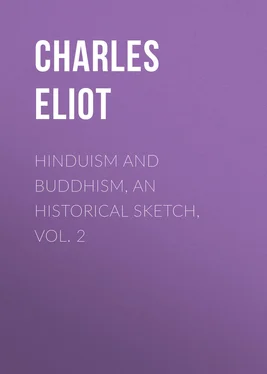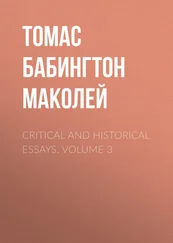Charles Eliot - Hinduism and Buddhism, An Historical Sketch, Vol. 2
Здесь есть возможность читать онлайн «Charles Eliot - Hinduism and Buddhism, An Historical Sketch, Vol. 2» — ознакомительный отрывок электронной книги совершенно бесплатно, а после прочтения отрывка купить полную версию. В некоторых случаях можно слушать аудио, скачать через торрент в формате fb2 и присутствует краткое содержание. Жанр: foreign_religion, Философия, Религиозная литература, foreign_psychology, foreign_antique, foreign_prose, на английском языке. Описание произведения, (предисловие) а так же отзывы посетителей доступны на портале библиотеки ЛибКат.
- Название:Hinduism and Buddhism, An Historical Sketch, Vol. 2
- Автор:
- Жанр:
- Год:неизвестен
- ISBN:нет данных
- Рейтинг книги:4 / 5. Голосов: 1
-
Избранное:Добавить в избранное
- Отзывы:
-
Ваша оценка:
- 80
- 1
- 2
- 3
- 4
- 5
Hinduism and Buddhism, An Historical Sketch, Vol. 2: краткое содержание, описание и аннотация
Предлагаем к чтению аннотацию, описание, краткое содержание или предисловие (зависит от того, что написал сам автор книги «Hinduism and Buddhism, An Historical Sketch, Vol. 2»). Если вы не нашли необходимую информацию о книге — напишите в комментариях, мы постараемся отыскать её.
Hinduism and Buddhism, An Historical Sketch, Vol. 2 — читать онлайн ознакомительный отрывок
Ниже представлен текст книги, разбитый по страницам. Система сохранения места последней прочитанной страницы, позволяет с удобством читать онлайн бесплатно книгу «Hinduism and Buddhism, An Historical Sketch, Vol. 2», без необходимости каждый раз заново искать на чём Вы остановились. Поставьте закладку, и сможете в любой момент перейти на страницу, на которой закончили чтение.
Интервал:
Закладка:
I-Ching, who ends his work by asserting that all his statements are according to the Ârya-mûla-sarvâstivâda-nikâya and no other, gives an interesting summary of doctrine.
"Again I say: the most important are only one or two out of eighty thousand doctrines of the Buddha: one should conform to the worldly path but inwardly strive to secure true wisdom. Now what is the worldly path? It is obeying prohibitive laws and avoiding any crime. What is the true wisdom? It is to obliterate the distinction between subject and object , to follow the excellent truth and to free oneself from worldly attachments: to do away with the trammels of the chain of causality: further to obtain merit by accumulating good works and finally to realize the excellent meaning of perfect reality ."
Such a statement enables us to understand the remark which he makes elsewhere that the same school may belong to the Hinayana and Mahayana in different places, for, whatever may be meant by wisdom which aims at obliterating the difference between subject and object, it is clearly not out of sympathy with Yogâcâra doctrines. In another place where he describes the curriculum followed by monks he says that they learn the Yogâcârya-śâstra first and then eight compositions of Asanga and Vasubandhu. Among the works prescribed for logic is the Nyâyadvâra-śâstra attributed to Nâgârjuna. The monk should learn not only the Abhidharma of the Sarvâstivâdins but also the Âgamas, equivalent to the Sûtra-piṭaka. So the study of the sûtras and the works of Asanga and Vasubandhu is approved by a Sarvâstivâdin.
The Sautrântikas, 234 234 See Vasilief, pp. 301 ff. and various notices in Hsüan Chuang and Watters. Also de la Vallée Poussin's article in E.R.E.
though accounted Hinayanists, mark a step in the direction of the Mahayana. The founder of the school was Kumarâlabdha, mentioned above. In their estimation of scripture they reversed the views of the Vaibhâshikas, for they rejected the Abhidharma and accepted only the sûtras, arguing that the Abhidharma was practically an extract from them. As literary criticism this is correct, if it means that the more ancient sûtras are older than the oldest Abhidharma books. But the indiscriminate acceptance of sûtras led to a creed in which the supernatural played a larger part. The Sautrântikas not only ascribed superhuman powers to the Buddha, but believed in the doctrine of three bodies. In philosophy, though they were realists, they held that external objects are not perceived directly but that their existence is inferred. 235 235 Hsüan Chuang informs us that when he was in Śrughna he studied the Vibhâshâ of the Sautrântikas, but the precise significance of this term is not plain.
Something has already been said of the two other schools, both of which denied the reality of the external world. The differences between them were concerned with metaphysics rather than theology and led to no popular controversies.
Up to this point the history of Indian Buddhism has proved singularly nebulous. The most important dates are a matter of argument, the chief personages half mythical. But when the records of the Chinese pilgrims commence we are in touch with something more solid. They record dates and facts, though we must regret that they only repeat what they heard and make no attempt to criticize Indian traditions or even to weave them into a connected chronicle.
Fa-Hsien, the first of these interesting men, left China in 399 and resided in India from 405 to 411, spending three years at Pataliputra and two at Tamralipti. He visited the Panjab, Hindustan and Bengal and his narrative leaves the impression that all these were in the main Buddhist countries: of the Deccan which he did not visit he heard that its inhabitants were barbarous and not Buddhists, though it contained some Buddhist shrines. Of the Middle Kingdom (which according to his reckoning begins with Muttra) he says that the people are free and happy and neither kill any living creature nor drink intoxicating liquor. 236 236 Fa-Hsien's Travels , chap. XVI.
He does not hint at persecution though he once or twice mentions that the Brahmans were jealous of the Buddhists. Neither does he indicate that any strong animosity prevailed between Maha and Hinayanists. But the two parties were distinct and he notes which prevailed in each locality. He left China by land and found the Hinayana prevalent at Shen-shen and Wu-i (apparently localities not far from Lob-Nor) but the Mahayana at Khotan. Nearer India, in countries apparently corresponding to parts of Kashmir and Gilgit, the monks were numerous and all Hinayanist. The same was the case in Udyana, and in Gandhara the Hinayanists were still in the majority. In the Panjab both schools were prevalent but the Hinayana evidently strong. In the district of Muttra the Law was still more flourishing, monasteries and topes were numerous and ample alms were given to the monks. He states that the professors of the Abhidharma and Vinaya made offerings to those works, and the Mahayanists to the book Prajñâ-pâramitâ, as well as to Mañjuśrî and Kwan-shih-yin. He found the country in which are the sacred sites of Śrâvasti, Kapilavastu and Kusinârâ sparsely inhabited and desolate, but this seems to have been due to general causes, not specially to the decay of religion. He mentions that ninety-six 237 237 This figure is probably deduced from some artificial calculation of possible heresies like the 62 wrong views enumerated in the Brahma-Jala sûtra.
varieties of erroneous views are found among the Buddhists, which points to the existence of numerous but not acutely hostile sects and says that there still existed, apparently in Kośala, followers of Devadatta who recognized three previous Buddhas but not Śâkyamuni. He visited the birth-places of these three Buddhas which contained topes erected in their honour.
He found Magadha prosperous and pious. Of its capital, Patna, he says "by the side of the topes of Asoka has been made a Mahayana monastery very grand and beautiful, there is also a Hinayana one, the two together containing 600 or 700 monks." It is probable that this was typical of the religious condition of Magadha and Bengal. Both schools existed but the Mahayana was the more flourishing. Many of the old sites, such as Râjagṛiha and Gaya, were deserted but there were new towns near them and Bodh Gaya was a place of pilgrimage with three monasteries. In the district of Tamralipti (Tamluk) on the coast of Bengal were 22 monasteries. As his principal object was to obtain copies of the Vinaya, he stayed three years in Patna seeking and copying manuscripts. In this he found some difficulty, for the various schools of the Vinaya, which he says were divided by trivial differences only, handed down their respective versions orally. He found in the Mahayanist monastery one manuscript of the Mahâsânghika rules and considered it the most complete, but also took down the Sarvâstivâdin rules.
After the death of Vasubandhu few names of even moderate magnitude stand out in the history of Indian Buddhism. The changes which occurred were great but gradual and due not to the initiative of innovators but to the assimilative power of Hinduism and to the attractions of magical and emotional rites. But this tendency, though it doubtless existed, did not become conspicuous until about 700 A.D. The accounts of the Chinese pilgrims and the literature which has been preserved suggest that in the intervening centuries the monks were chiefly occupied with scholastic and exegetical work. The most distinguished successors of Asanga were logicians, among whom Diṅnâga was pre-eminent. Sthiramati 238 238 He must have lived in the fourth century as one of his works (Nanjio, 1243) was translated between 397 and 439.
and Guṇamati appear to have belonged to the same school and perhaps Bhavaviveka 239 239 Watters, Yüan Chwang , II. 221-224. Nanjio, 1237. The works of Guṇamati also are said to show a deep knowledge of the Sânkhya philosophy.
too. The statements as to his date are inconsistent but the interesting fact is recorded that he utilized the terminology of the Sânkhya for the purposes of the Mahayana.
Интервал:
Закладка:
Похожие книги на «Hinduism and Buddhism, An Historical Sketch, Vol. 2»
Представляем Вашему вниманию похожие книги на «Hinduism and Buddhism, An Historical Sketch, Vol. 2» списком для выбора. Мы отобрали схожую по названию и смыслу литературу в надежде предоставить читателям больше вариантов отыскать новые, интересные, ещё непрочитанные произведения.
Обсуждение, отзывы о книге «Hinduism and Buddhism, An Historical Sketch, Vol. 2» и просто собственные мнения читателей. Оставьте ваши комментарии, напишите, что Вы думаете о произведении, его смысле или главных героях. Укажите что конкретно понравилось, а что нет, и почему Вы так считаете.












